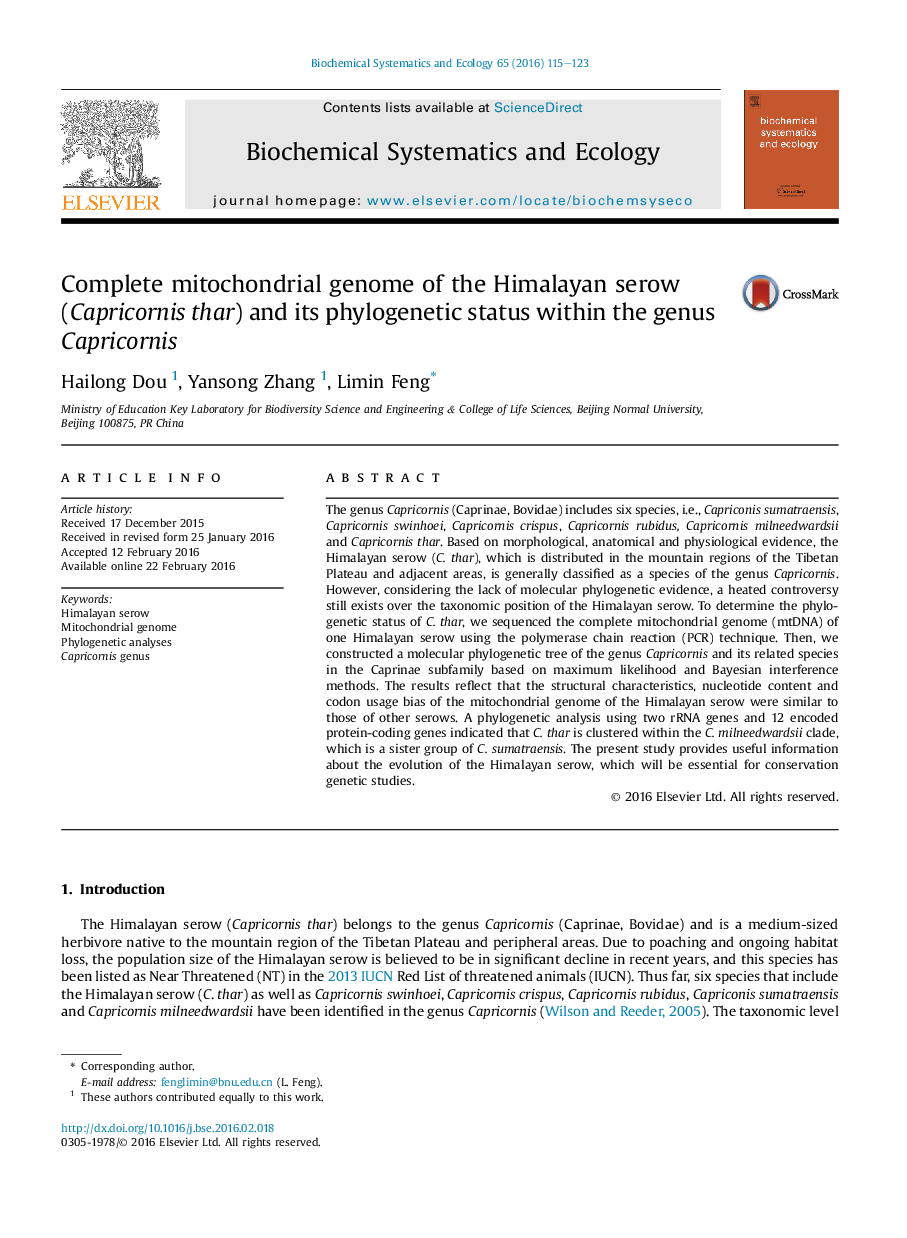| Article ID | Journal | Published Year | Pages | File Type |
|---|---|---|---|---|
| 7767944 | Biochemical Systematics and Ecology | 2016 | 9 Pages |
Abstract
The genus Capricornis (Caprinae, Bovidae) includes six species, i.e., Capriconis sumatraensis, Capricornis swinhoei, Capricornis crispus, Capricornis rubidus, Capricornis milneedwardsii and Capricornis thar. Based on morphological, anatomical and physiological evidence, the Himalayan serow (C. thar), which is distributed in the mountain regions of the Tibetan Plateau and adjacent areas, is generally classified as a species of the genus Capricornis. However, considering the lack of molecular phylogenetic evidence, a heated controversy still exists over the taxonomic position of the Himalayan serow. To determine the phylogenetic status of C. thar, we sequenced the complete mitochondrial genome (mtDNA) of one Himalayan serow using the polymerase chain reaction (PCR) technique. Then, we constructed a molecular phylogenetic tree of the genus Capricornis and its related species in the Caprinae subfamily based on maximum likelihood and Bayesian interference methods. The results reflect that the structural characteristics, nucleotide content and codon usage bias of the mitochondrial genome of the Himalayan serow were similar to those of other serows. A phylogenetic analysis using two rRNA genes and 12 encoded protein-coding genes indicated that C. thar is clustered within the C. milneedwardsii clade, which is a sister group of C. sumatraensis. The present study provides useful information about the evolution of the Himalayan serow, which will be essential for conservation genetic studies.
Related Topics
Physical Sciences and Engineering
Chemistry
Organic Chemistry
Authors
Hailong Dou, Yansong Zhang, Limin Feng,
